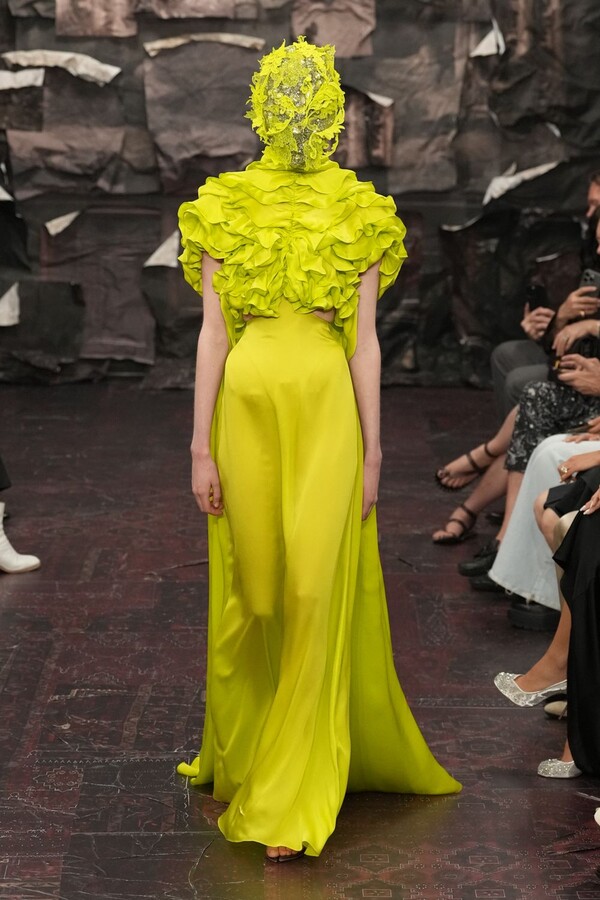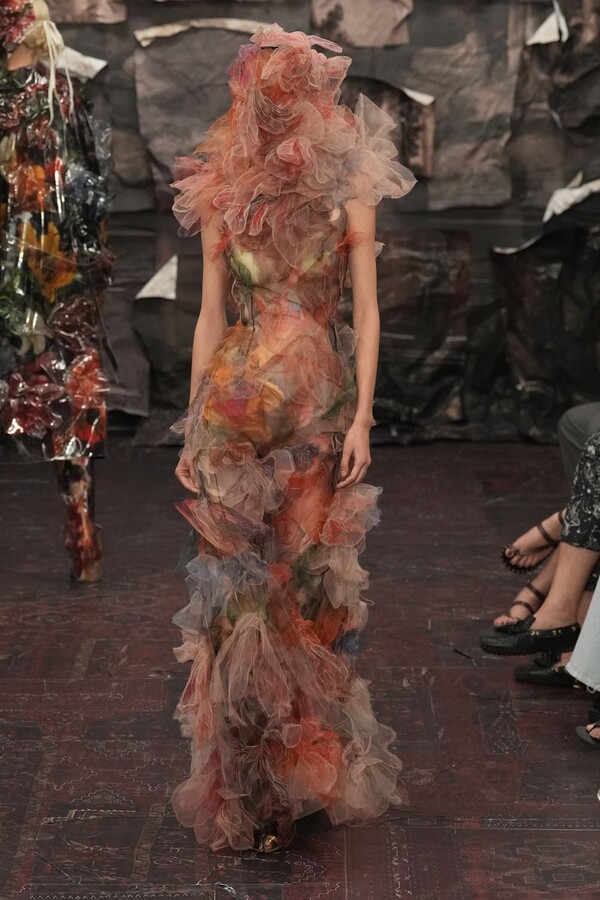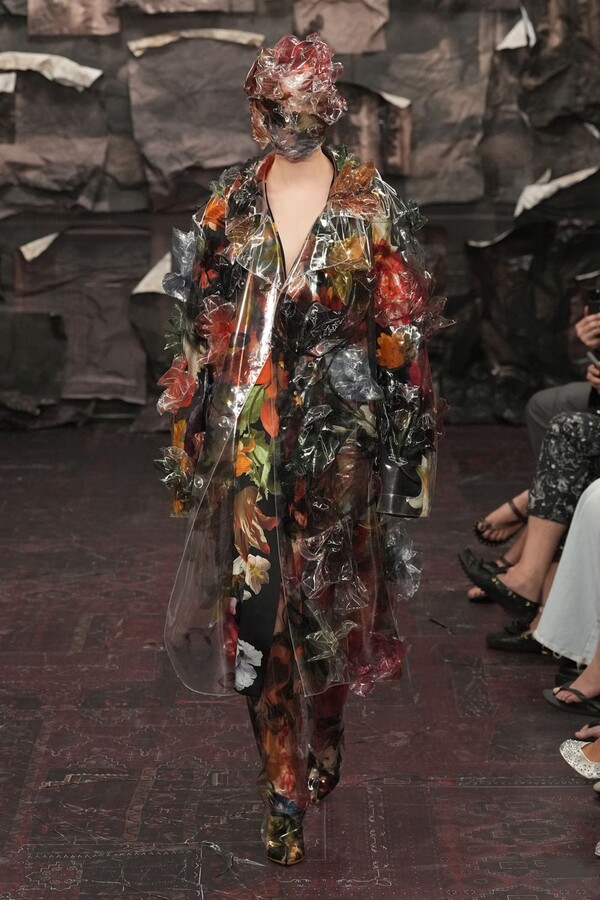Margiela Couture FW25: Glenn Martens and the Art of Inheriting Ghosts
Fifteen years ago, Martin Margiela quietly bowed out in a space that felt more like an echo chamber than a fashion venue. There were no announcements, no goodbyes—just a retrospective that looked back without saying it was over. Tonight, in that same room, Glenn Martens opened his first couture chapter for Maison Margiela. But this wasn’t a resurrection. It was a re-reading of a ghost story.
The choice of venue was deliberate—an architectural footnote turned into a loaded stage. The walls were covered in trompe-l’oeil wallpaper, a recurring motif from Martin’s own studio spaces and exhibitions. But Martens’s version was deliberately makeshift: crumpled, peeling, like a skin ready to shed. Not a polished homage, but a metaphor in motion. The illusion was cracking, and that was the point.
Martens stepped into the Maison not as an imitator but as a medium. He inherited not just a brand, but a silence—a legend made of absence, rumour, and myth. And he knew better than to fill it with noise. Instead, he built tension from material. Peeling paper. Upcycled plastics. Tin plates. Photocopies. Thrift-store lace. A couture made of leftovers, turned sacred. Ritual over razzle-dazzle.
Held in the gothic basement of Centquatre-Paris, the show felt like a séance. Guests sat under dim lighting as silhouettes emerged like apparitions—draped jersey gowns, sculptural corsets, church-statue volumes and layered metallics that seemed both decaying and divine. Masks returned, not as a gesture of anonymity, but of collective spirit. They framed not just faces, but moods: alien, fragile, defiant.
The collection pulsed with Belgian sensibility—emotional austerity, raw intellect, and an instinct for shadow over spotlight. Martens didn’t just cite the archive—he inhabited it, distorted it, and let it collapse. His references to Martin’s early plastic-coated garments or deconstructed tailoring weren’t direct quotes. They were refracted through time, grief, and an era obsessed with legacy but impatient with subtlety.
And while the broader fashion system spins through rapid-fire designer swaps—Demna leaving Balenciaga, new names cycling in—Martens’s entry felt like the opposite of a reshuffle. It was slow, intentional, and full of quiet resistance. A refusal to perform just for the sake of return. This was couture as commentary: a space for discomfort, for ambiguity, for delayed meaning.
Ultimately, Martens’s Margiela debut was not a reboot—it was an initiation. A ritualized passing of an invisible torch. A reminder that inheritance isn’t about preservation. It’s about translation. And sometimes, the only way to honour the ghost in the room is to let the wallpaper peel, step forward, and speak in your own voice.


